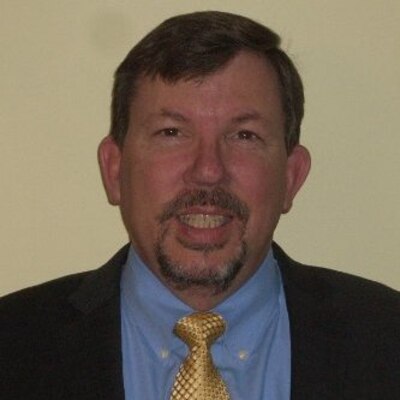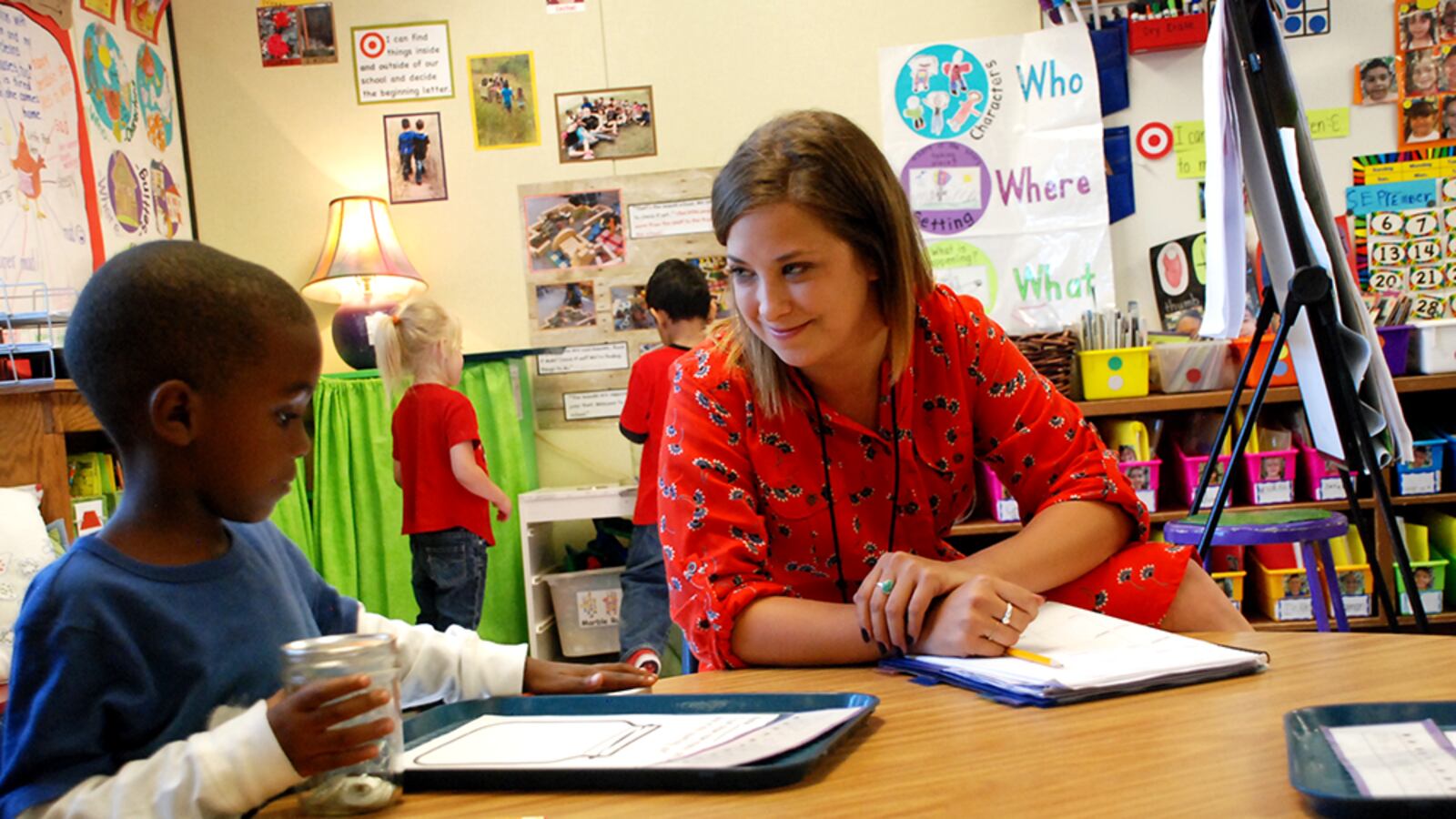Bruce Wilcox is settling in as the new president of the Aurora teachers union at a crucial time.
Aurora Public Schools is coping with budget challenges and declining student enrollment. Teachers are concerned about growing class size, their pay and more.
Meanwhile, a school board election this fall could change the direction of the 41,000-student district, which has undertaken a number of reforms to improve student achievement.
The union has opposed some of the reform efforts — including bringing high-performing Denver charter network DSST to Aurora — but to little effect.
Still, Wilcox said he hopes to forge a more cooperative relationship with district leaders.

Wilcox has held various positions with the district. He started working in Aurora as a paraprofessional and then spent 17 years as an elementary school teacher. He also has worked in district positions helping run programs in multiple schools.
Wilcox has attended meetings all over the district to hear from teachers and employees as he begins his term. He sat down with Chalkbeat to discuss the state of the district and the union:
Why did you decide to take this leadership role with the union?
I think we need to do so much more together. I know that was what I believe was Amy Nichols’ (his predecessor) intention — for us to work collaboratively with the district. I think I wanted to make sure that continued and hopefully that it improved. It’s so critical that we take the young teachers that we have and develop them into long-range teachers — the long-term teachers that stay with our district and have a great relationship with our district. Right now, I just see a lot of turnover.
What do you think of the current relationship between the district and its teachers?
I think it’s a condition that can be improved. There are three sides to this. There are teachers, administrators and then there’s the district level, all of which want what’s best for kids, and all of which want to improve the outcomes for kids. I just don’t think right now we’re all working together to do that.
What do you think are the major challenges facing Aurora schools right now?
I think teacher retention and development is a huge one. The biggest challenge with our student base is the declining enrollment, which affects teacher retention, which affects the ability of the district and the association and teachers to get better at what we do.
Do you have goals for what you would ideally like to change or accomplish in this role?
As far as the organization itself goes, that we move into a role where we are more supportive of our younger teachers. That we take on some of the professional development the district isn’t able to do, or isn’t doing, so that we can develop those young teachers, develop those new teachers. Or take teachers who are struggling but who may not be new, and help them all become the best they can be. That we advocate for the best learning conditions for our students.
What are your thoughts on the budget problems the district is facing with decreasing enrollment and the process the district used this last school year to solicit input?
As far as the solicitation of input, I don’t know how effective that was in getting to everyone. It’s one thing to say we provided opportunities, but then the other is what effect that input really had. There may be another source of input that outweighed it, so that’s a concern. As far as the budget itself, last year was particularly difficult because of the reduction in force. We attempted to work with the district last year in formalizing that process. It is in the agreement and in state statute. There is some area where I believe it is vague and as a district and an association we should be able to come to agreeable terms. Right now I believe there’s some room for arbitrary decisions that we need to remove in order to be fair.
Part of Aurora’s reforms have included adding charter schools, including DSST, which the school board just approved. Many teachers spoke at board meetings against that charter. Do you also feel it was a bad idea to bring the school? And if so, why?
I was one of those people who spoke at that meeting. There is obvious concern that we are bringing in a school, and that we don’t know how it fits into the long-range plan.
We also are at a point where we’re seeing a declining student enrollment and now you’re going to be bringing in a charter school which will decrease not the overall district enrollment but certainly the enrollment to the traditional piece of the Aurora Public Schools. In addition, DSST was the second school that’s being brought in different from past practice, so I would say I have more of an objection to how it came. Charter schools in the past have had to find their own location. Now we are saying that we have placed into the bond money to assist in building that building (for DSST). In the past if charter schools wished to come to the Aurora, they applied. In this particular case the district, the superintendent, reached out to them. I think there are some concerns about the process that was used.
Charter schools do not have the same public accountability that traditional schools do. They also do not have the same constraints, so they operate much differently.
The board had some discussion early last school year about the fact that per a new contract, teachers in Aurora received a pay raise, while the district was planning serious budget cuts. Do you think the pay raises were necessary, and if so, what’s the proper way to find balance between those needs and the needs for budget cuts?
That’s a much bigger issue and I think if we want to ask about should teachers receive pay raises, we should also ask how money has been spent in the district in general. We need to look at the big picture. If you want to retain teachers, then you have to have a means by which to pay teachers and to retain them and reward them for the service that they have.
We’ve had two pay freezes where we did not get steps and lanes (annual pay increases for years of experience or added education), something that is in the contract. We negotiate salary every year, and so those steps and lanes are not guaranteed just by being in the contract.
We understand there are tough economic times but it seems as if the increase or decrease of compensation for employees, and that’s all groups, seems to be the last thing the district considers in the budget.
Do you really think it’s becoming attractive for Aurora teachers to leave for other districts?
It’s certainly attractive to leave Aurora for other districts if you are concerned there are going to be pay freezes. If you are going to get those incremental increases in other districts and you’re not going to get them here, that certainly makes it attractive for some teachers to leave the district. The biggest thing here is the cost of living in the city of Aurora. By the numbers that were given (by district officials at a board meeting) our first and second year teachers cannot afford to live in the town they work in without economic hardship. So certainly if they have any kind of student loan it makes it extremely difficult for them to live here.
As prices increase, it affects not only our families but it affects our young teachers who are at the beginning of their careers. I have an awful lot of younger teachers who work multiple jobs. They don’t take summers off. They just get a different position for the summer. They work two jobs during the year so they can pay student loans and afford to live. So I think compensation is a huge issue. It’s a large reason people stay or leave. And whenever we don’t have stability in how we compensate our people, then it creates this doubt.
Is the job of Aurora teachers also changing?
Our population of students depending on where you are in the district is always in flux, which is always requiring teachers to learn and adapt, to acquire new skills and to do things that certainly I didn’t have to do 20 years ago when I started. Now I need to be knowledgeable about mental health and well-being of students. I need to know the resources that are available in order to do what’s best for my students.
The other thing we’re going to see is increasing class sizes as a result of the reduction in force. We really don’t know what that’s going to look like. The district will adjust as student counts are different than they anticipated.
When you have a classroom and you increase it in size that adds a lot of work. It’s not just that you have to prepare for more students. You have to prepare for more students that are at different levels of need.


